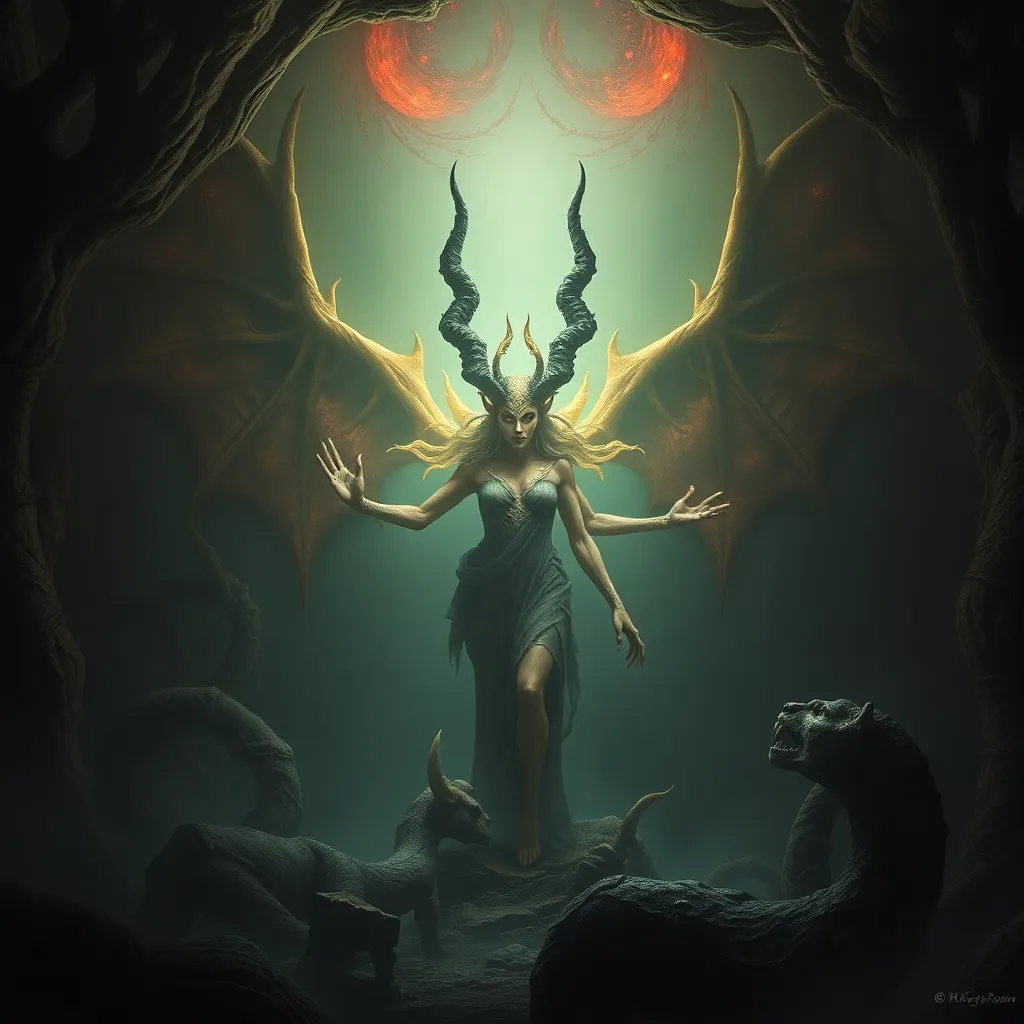Tengu and the Supernatural: Exploring Their Role in Religious Beliefs and Practices
I. Introduction to Tengu
Tengu are fascinating creatures deeply rooted in Japanese mythology and folklore, often depicted as a hybrid of human and bird-like characteristics. Their portrayal has evolved over centuries, shifting from fearsome demons to protectors of the mountains and guardians of sacred spaces.
A. Definition and Origin of Tengu
The term “Tengu” (天狗) is composed of two kanji characters: “ten” (天), meaning “heaven,” and “gu” (狗), meaning “dog.” This etymology reflects their celestial origins and their association with both nature and the supernatural. Historically, Tengu were viewed as malevolent spirits, but over time they have come to embody a more complex role within Japanese culture.
B. Historical Context and Evolution of Tengu in Japanese Mythology
Tengu’s roots can be traced back to ancient Chinese mythology, where similar bird-like spirits existed. They were introduced to Japan during the Heian period (794-1185) and gradually morphed into uniquely Japanese entities. In the Kamakura period (1185-1333), Tengu began to be seen as protectors of the mountains and practitioners of martial arts, reflecting the changing societal views of these beings.
II. Tengu in Japanese Folklore
A. The Characteristics and Traits of Tengu
Tengu are often described as having human-like features combined with avian traits, such as beaks, feathers, and the ability to fly. They are known for their mischievous and sometimes malevolent behavior, but also possess wisdom and martial prowess. Key characteristics include:
- Skilled in martial arts and magic
- Protectors of the mountains and forests
- Tricksters who can lead travelers astray
B. Different Types of Tengu: From Shōjō to Karasu Tengu
There are various types of Tengu, each with distinct traits:
- Shōjō: Often depicted with long hair and a red face, these Tengu are known for their singing abilities.
- Karasu Tengu: Bird-like Tengu that resemble crows, regarded as more malevolent and are associated with mischief.
- Sōjō: A more human-like Tengu that often acts as a protector or mentor to warriors.
III. Tengu as Supernatural Beings
A. The Role of Tengu in Shinto and Buddhist Traditions
Tengu are significant figures in both Shinto and Buddhist traditions. In Shinto, they are considered kami (gods or spirits) of the mountains, embodying the power of nature. In Buddhism, particularly in esoteric practices, Tengu are seen as protectors of Buddhist teachings and practitioners.
B. Tengu and Their Connection to Nature and the Spirit World
Tengu are believed to dwell in remote mountain areas, symbolizing the wild and untamed aspects of nature. Their connection to the spirit world is profound, as they act as intermediaries between humans and the divine, often guiding or challenging those who seek spiritual growth.
IV. Tengu in Religious Practices
A. Rituals and Offerings Associated with Tengu
In various regions of Japan, rituals and offerings are made to appease Tengu and seek their blessings. Common practices include:
- Offering food such as rice and sake at shrines dedicated to Tengu.
- Performing dances and ceremonies to honor Tengu.
- Creating talismans for protection against malevolent Tengu.
B. Tengu as Protectors of Sacred Spaces and Shrines
Tengu are often regarded as guardians of sacred sites, particularly mountain shrines. They are believed to protect these spaces from evil spirits and to ensure the safety of travelers. Many shrines feature Tengu imagery, emphasizing their role as protectors.
V. Tengu in Art and Literature
A. Representation of Tengu in Traditional Japanese Art
Tengu have been a popular subject in traditional Japanese art, appearing in ukiyo-e woodblock prints, paintings, and sculptures. Artists often depict them with exaggerated features, emphasizing their supernatural nature. Notable artists include:
- Utagawa Kuniyoshi
- Hokusai
- Yoshitoshi
B. Tengu in Modern Media and Popular Culture
In contemporary media, Tengu have found a place in manga, anime, and video games. They are often portrayed as heroic or comedic figures, reflecting the ongoing fascination with these mythical beings. Notable examples include:
- The character Tengu in the popular anime “Naruto.”
- The presence of Tengu in video games such as “Okami.”
VI. Regional Variations of Tengu Beliefs
A. Differences in Tengu Worship Across Japan
Tengu worship varies significantly across Japan, influenced by local folklore and cultural practices. For example, in the Kanto region, Tengu are often viewed as protectors, while in the Kansai region, they may be regarded with suspicion.
B. Influence of Local Folklore on Tengu Interpretations
Local legends and folklore shape the characteristics and stories surrounding Tengu. In some areas, they are connected to specific mountains or historical events, enriching the tapestry of Tengu mythology.
VII. Contemporary Perspectives on Tengu
A. Tengu in Modern Spiritual Practices and Neo-Shintoism
In recent years, Tengu have been embraced in modern spiritual practices, including Neo-Shintoism. Practitioners may invoke Tengu for guidance, protection, and wisdom, reflecting a renewed interest in traditional beliefs.
B. The Role of Tengu in Japanese Identity and Cultural Heritage
Tengu remain a symbol of Japanese identity, representing the connection between the natural world and the spiritual realm. Their enduring presence in festivals, art, and literature highlights their role in preserving Japan’s cultural heritage.
VIII. Conclusion
A. Summary of Tengu’s Significance in Religious Beliefs
Tengu occupy a unique position in Japanese religious beliefs, embodying the complexity of the relationship between humanity and the supernatural. They serve as protectors, tricksters, and guides, reflecting the multifaceted nature of spiritual existence.
B. The Continuing Influence of Tengu on Japanese Culture and Spirituality
As Japan continues to navigate the complexities of modern life, the influence of Tengu persists, reminding individuals of the importance of nature, spirituality, and cultural heritage. Their legacy continues to inspire and shape Japanese identity, ensuring that Tengu will remain a vital part of the nation’s folklore for generations to come.



